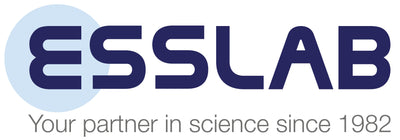ESSLAB Industry News
Nitrosamines: ESSLAB’s role in supporting laboratories’ analytical and regulatory challenges
Environmental and public health risks
Nitrosamines, a family of highly carcinogenic compounds, present substantial risks to both the environment and human health. They can contaminate water bodies, soil, and air through industrial activities and agricultural runoff, posing threats to ecosystems and human health through bioaccumulation and biomagnification.
ESSLAB provides crucial support to analysts in the assay of nitrosamines by offering a range of Certified Reference Materials (CRM’s) and chromatography consumables. These enable analysts to develop robust analytical methods to ensure accuracy and precision, ultimately safeguarding public health. Effective nitrosamine screening and regulatory adherence in pharmaceutical and environmental testing is assured.
Pharmaceutical manufacturing risks
In pharmaceuticals, nitrosamines can form as impurities during manufacturing processes, leading to numerous product recalls and global regulatory actions. This has undermined public trust in medicine safety. Detecting even trace amounts of nitrosamines in pharmaceuticals is crucial due to their severe health risks.
Environmental regulations
Regulatory efforts by environmental agencies such as the Environmental Agency (EA), the Scottish Environmental Protection Agency (SEPA) and the US Environmental Protection Agency (EPA), focus on setting limits for nitrosamines in environmental media and developing analytical methods to monitor and control their levels.
Pharmaceutical regulations
Pharmaceutical agencies such as UK Medicines and Healthcare Products Regulatory Agency (MHRA), the European Pharmacopeia (EP), and the United States Pharmacopeia (USP), focus on establishing quality standards for pharmaceuticals, dietary supplements and related products. They establish standards for quality and have been actively involved in addressing nitrosamine contamination.
Nitrosamines analysis - the 7 main challenges for analysts
- Analytical techniques complexity. Nitrosamines exist in trace amounts, necessitating highly sensitive techniques, including GC-MS and LC-MS, which may require optimization for detection.
- Standards and reference materials. Highly certified reference materials (CRM’s) make accurate quantification challenging, requiring analysts to develop in-house standards or work with suppliers for suitable high quality materials.
- Sample preparation and matrix effects. Complex sample matrices interfere with analysis, requiring effective sample preparation techniques to extract nitrosamines while minimizing matrix effects.
- Regulatory compliance. Stringent regulations worldwide necessitate adherence to evolving standards, requiring analysts to stay updated and ensure compliance.
- Method validation. Rigorous validation of analytical methods is crucial to demonstrate accuracy, precision, and robustness for nitrosamine analysis.
- Continuous monitoring. Analysts must continuously monitor a wide range of products for nitrosamine contamination to identify sources and assess risks.
- Emerging contaminants of concern. Ongoing research may identify new nitrosamine contaminants, requiring adaptability in analytical methods.
To overcome these challenges, analytical laboratories need to develop robust methods, establish standards, and ensure compliance with regulations to protect public health effectively. ESSLAB's range of Certified Reference Materials and chromatography consumables supports analysts in generating credible analytical data, aiding nitrosamine screening and regulatory compliance.
References:
EPA Method 521:
Determination of Nitrosamines in Drinking Water by Solid Phase Extraction and Capillary Column and Solid Phase Extraction and Capillary Column Gas Chromatography
Download PDF
EPA Method 607:
Nitrosamines
Download PDF
EPA Method 8070A:
Nitrosamines by Gas Chromatography - Revision 1
Download PDF
Chromatography Application Library:
Information Link
EPA's Risk Assessment for Nitrosamines:
Information Link
USP General Chapter <1469> "Nitrosamines in Drug Products" provides guidance on risk assessment and control strategies.:
Information Link
FDA: Control of Nitrosamine Impurities in Human Drugs Guidance for Industry:
Information Link
CRMs Literature: BMF 55 - Nitrosamines and Nitramines:
177_BMF_55_Nitrosamines (PDF)
Regulatory Agencies continuously update their strategies and methods in response to emerging scientific evidence and regulatory requirements to ensure the safety of human health and the environment from nitrosamine exposure.



Leave a comment